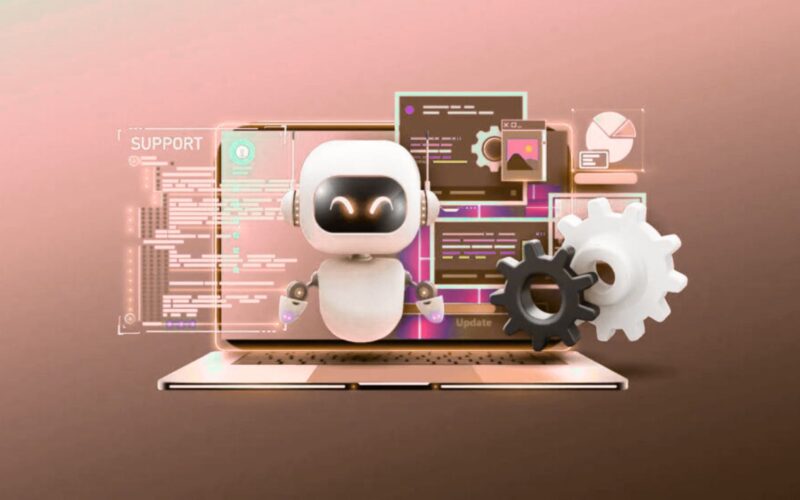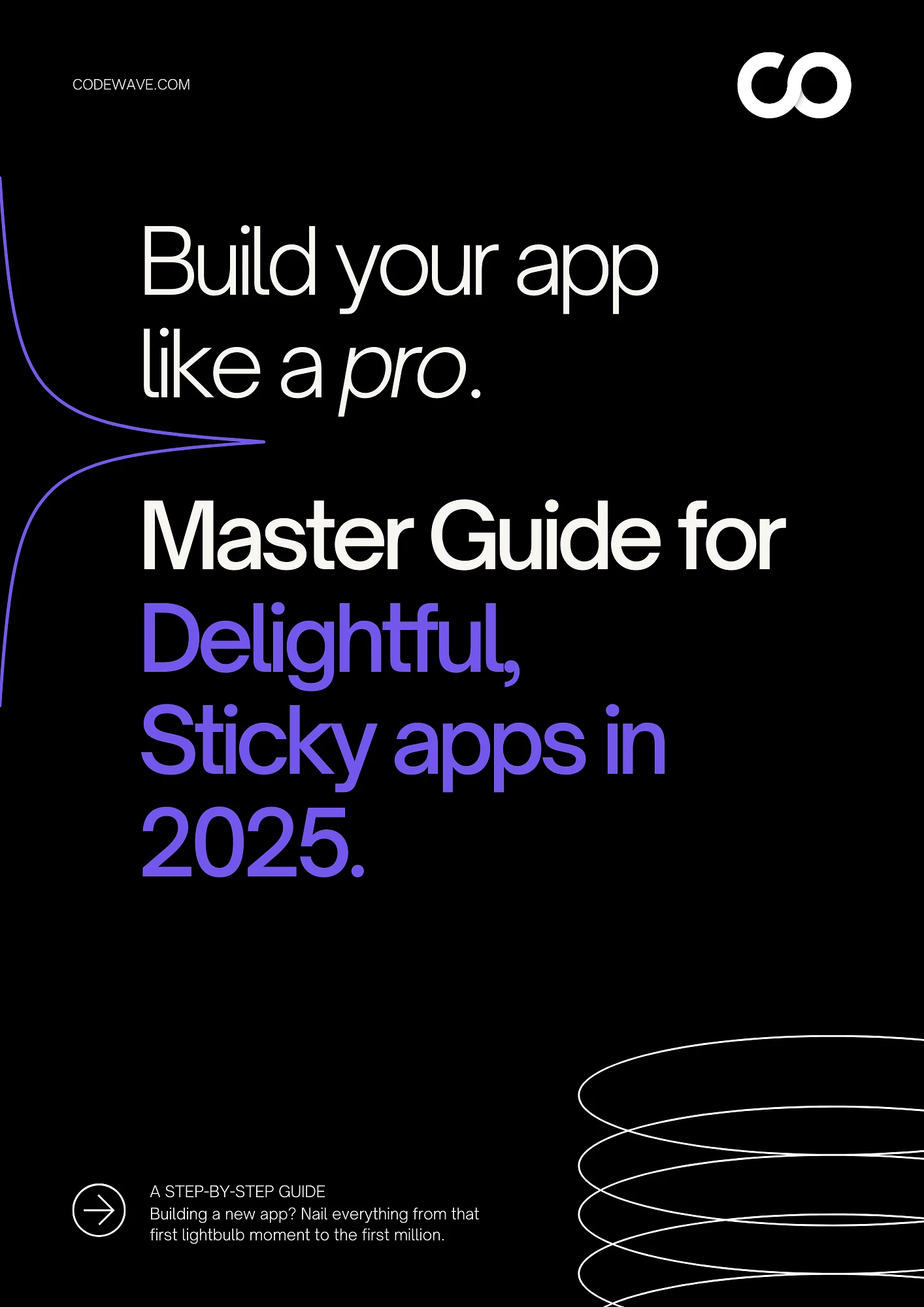Which AI should you bet on first? The answer starts with one core distinction. Generative AI produces something new that didn’t exist before. Predictive AI spots patterns to forecast future outcomes.
Around 280 million of the world’s 359 million companies now use AI in some capacity. That’s a massive uptake, yet many executives still treat all AI as basically the same thing. It’s not.
Your business probably needs both eventually, but starting with the wrong one wastes resources and momentum. We’re going to clarify exactly what each technology does, show you where each one works best, and help you figure out which investment makes sense for your situation right now. No technical jargon, just clear guidance.
Key Takeaways
- Generative AI creates new content from prompts and works immediately; predictive AI forecasts outcomes but needs six months to two years of clean historical data first.
- Most businesses waste budget by choosing AI based on competitor announcements rather than identifying specific internal problems that need solving with measurable outcomes.
- Predictive AI projects spend most effort on data cleaning rather than model building; generative AI skips this burden but still requires brand context and usage guidelines.
- Mismatching technology to business problems causes the most expensive failures; use generative AI exclusively for content creation and predictive AI only for forecasting future outcomes.
- Sequential implementation proves its value faster than simultaneous deployment; start with your biggest bottleneck, measure ROI clearly, then add the second technology strategically.
Generative AI vs Predictive AI: A Side-by-Side Comparison
We’ve broken down the key differences into a quick reference table for those who want to compare both technologies at a glance:
| Aspect | Generative AI | Predictive AI |
|---|---|---|
| Core Purpose | Creates new content, designs, or solutions from scratch | Forecasts future outcomes based on historical patterns |
| Primary Output | Original text, images, code, audio, video, or designs | Predictions, probabilities, risk scores, forecasts |
| Data Requirements | Needs massive training datasets initially, then works with minimal input prompts | Requires clean, structured historical data specific to your business |
| Learning Approach | Learns patterns and structures to generate novel combinations | Learns correlations between variables to predict outcomes |
| Time to Value | Can deliver results immediately after deployment by carefully crafting instructions given to the AI (known as prompt engineering). | Requires a data collection period and model training before reliable predictions |
| Accuracy Measurement | Evaluated on relevance, coherence, and quality of outputs | Measured by prediction accuracy percentages and error rates |
| Implementation Complexity | Moderate, mainly requires prompt optimization and integration | High, needs data cleaning, feature engineering, and ongoing validation |
| Best For | Content creation, customer interaction, creative exploration, documentation | Forecasting, risk assessment, optimization, pattern detection |
| Human Oversight Needed | Review outputs for accuracy, brand alignment, and appropriateness | Validate predictions, interpret results, and make final decisions |
| Scalability | Scales easily once deployed, limited mainly by API costs | Scales with data quality and computing power for model training |
| Update Frequency | Models updated periodically by providers, prompts adjusted as needed | Requires regular retraining as business conditions and patterns change |
| Common Failure Mode | Generates plausible but incorrect or biased content | Makes inaccurate predictions when patterns change or the data is poor |
And now, for those who wish to dig deeper, here is a detailed explanation of the difference between the two terms:
What Is Generative AI
Generative AI is a technology that creates entirely new content based on patterns it has learned from existing data. Think of it as a system that studied millions of examples and now produces original text, images, code, or designs when you give it instructions. It doesn’t copy what it sees.
Instead, it understands underlying structures and generates fresh outputs that match your specific requirements. The technology uses neural networks called transformers that process your prompt and build responses word by word or pixel by pixel.
The Technology Behind Generative AI
Generative AI runs on large language models and neural networks trained on massive datasets. Here’s what powers it:
- Training Process: The system analyzes billions of examples to learn patterns, relationships, and structures in data. This training phase requires enormous computing power and can take weeks or months.
- Transformer Architecture: These neural networks use attention mechanisms to understand context and relationships between different parts of your input, letting them generate coherent and relevant outputs.
- Prompt Engineering: The AI interprets your instructions and uses probability calculations to determine what content makes sense to create next, building outputs token by token.
- Fine-Tuning Capabilities: Models can be customized with your specific data to generate content that matches your brand voice, industry terminology, or business requirements.
Business Applications of Generative AI
Generative AI transforms how companies create, communicate, and innovate across industries. Here’s where it delivers real impact:
- Fintech: Automated report generation for compliance documents, personalized financial advice content, chatbots that explain complex products in simple terms, and fraud pattern analysis narratives.
- Education: Customized learning materials for different skill levels, automated quiz and assessment creation, instant feedback on student work, and translation of educational content into multiple languages.
- Healthcare: Medical documentation from doctor-patient conversations, patient education materials in accessible language, drug discovery through molecular structure generation, and radiology report drafting.
- Agriculture: Crop planning recommendations based on local conditions, pest identification guides, automated weather impact reports, customized farming schedules for different regions.
- Energy: Maintenance procedure documentation, safety protocol generation, grid optimization strategies, environmental impact reports, energy consumption forecasting narratives.
- Transportation: Route optimization explanations, maintenance scheduling reports, customer service chatbots for bookings and inquiries, logistics documentation, safety briefing materials.
- Retail: Product descriptions at scale, personalized marketing copy, customer service automation, virtual try-on experiences, inventory planning narratives, trend analysis reports.
Also Read: Generative AI Consulting and Strategy for Business Innovation
Best Use Cases for Your Business
Deploy generative AI when you need to scale content creation without proportionally scaling your team. It works best for repetitive, creative tasks that follow patterns but require customization. Consider it when your business faces these situations:
- High-volume content needs: You’re producing hundreds of product descriptions, social media posts, or customer communications monthly, and quality is suffering from the manual workload.
- Personalization at scale: Your customers expect personalized experiences, but your team can’t manually customize interactions for thousands or millions of individual users.
- Knowledge democratization: Your experts spend too much time answering the same questions repeatedly, and you need to capture their knowledge in accessible formats.
- Creative exploration: You need multiple design concepts, marketing angles, or strategic options quickly to test what resonates with your audience.
- Documentation bottlenecks: Technical documentation, reports, or compliance materials pile up because writing them takes specialists away from higher-value work.
Cost and Resource Requirements
Budget anywhere from $20,000 to $500,000 for your first year, depending on whether you use existing platforms or build custom solutions. Most businesses start with API based generative AI tools. Roughly plan for subscription costs, usage-based pricing, and some setup time. Treat these as broad indications, not rigid rules.
If you plan to build custom generative AI models, expect higher investments in data, engineering talent, and infrastructure. These are still estimates because actual costs vary by project size, complexity, and compliance needs.
What Is Predictive AI
Predictive AI analyzes historical data to forecast future outcomes and identify patterns humans might miss. It examines what happened before to tell you what’s likely to happen next, assigning probability scores to different scenarios.
The technology uses statistical models and machine learning algorithms that detect relationships between variables in your data.
Instead of creating something new, it processes existing information to surface insights, predictions, and recommendations that help you make better decisions about inventory, customer behavior, maintenance needs, or market trends.
The Technology Behind Predictive AI
Predictive AI relies on machine learning algorithms that identify patterns in historical data. Here’s what makes it work:
- Supervised Learning: The system trains on labeled historical data where outcomes are known, learning which factors correlate with specific results so it can predict similar situations.
- Feature Engineering: Data scientists identify and prepare relevant variables that influence outcomes, transforming raw data into formats that algorithms can process effectively for accurate predictions.
- Algorithm Selection: Different algorithms, like regression models, decision trees, or neural networks, suit different prediction tasks. Choosing the right one depends on your data type and business question.
- Validation and Testing: Models are tested against data they haven’t seen before to ensure predictions hold up in real-world conditions, with continuous monitoring to maintain accuracy over time.
Business Applications of Predictive AI
Predictive AI helps businesses anticipate challenges and opportunities before they arrive. Here’s how different industries deploy it:
- Fintech: Credit risk assessment for loan approvals, fraud detection in real-time transactions, stock price movement predictions, customer churn forecasting, and algorithmic trading strategies.
- Education: Student performance predictions to identify who needs intervention, enrollment forecasting for resource planning, dropout risk identification, and personalized learning path recommendations.
- Healthcare: Disease progression forecasting, patient readmission risk scores, treatment outcome predictions, resource allocation for hospital capacity, epidemic outbreak modeling.
- Agriculture: Crop yield predictions based on weather and soil data, pest outbreak forecasting, optimal harvest timing recommendations, irrigation needs prediction, and commodity price forecasting.
- Energy: Power demand forecasting for grid management, equipment failure prediction for preventive maintenance, renewable energy output predictions, and consumption pattern analysis for pricing.
- Transportation: Traffic congestion predictions, vehicle maintenance needs forecasting, delivery time estimates, demand forecasting for fleet allocation, and accident risk identification on specific routes.
- Retail: Sales forecasting for inventory optimization, customer lifetime value predictions, demand forecasting by location and season, price optimization modeling, and customer churn prediction.
Best Use Cases for Your Business
Predictive AI delivers value when you have clean historical data and need to make better decisions about future events. It’s your tool when past patterns reliably indicate future outcomes. Deploy it in these scenarios:
- Resource optimization: You’re managing inventory, staffing, or capacity and need to match supply with predicted demand to avoid waste or shortages.
- Risk management: You need to identify which customers might leave, which loans might default, or which equipment might fail before problems occur.
- Operational efficiency: Your processes generate data that reveals patterns in performance, quality issues, or bottlenecks that predictive models can flag early.
- Customer behavior: You want to anticipate what customers will buy next, when they’ll purchase, or how they’ll respond to different offers based on historical actions.
- Maintenance and reliability: Your equipment or infrastructure generates performance data that signals when failures are likely, letting you service proactively rather than reactively.
As your business explores these use cases, you may reach a point where both generative AI and predictive AI become relevant. This is where partnering with the right team makes the difference.
Codewave can help you build either technology, depending on the outcomes you want. We have delivered hundreds of digital and AI-driven solutions across more than fifteen industries. Our design-first thinking approach ensures every build starts from clarity, user understanding, and the real impact your business expects.
If you are planning to bring AI into your organization and want a partner who can translate your goals into working systems, this is the moment to start the conversation.
Let Codewave help you create AI that drives measurable results instead of guesswork.
Cost and Resource Requirements
Expect to invest $30,000 to $300,000 for initial predictive AI deployment, though costs vary widely based on data complexity and model sophistication. Predictive AI costs depend on how much data you have and how accurate you need the model to be.
You will usually need tools for data storage, cleaning, and model training. These values should be treated as rough indicators.
If you require high accuracy or real-time forecasting, expect additional investment in infrastructure, engineering time, and ongoing model maintenance. Actual expenses vary widely based on data quality, security needs, and integration complexity.
Which One Should You Invest In First?
The right starting point depends less on which technology sounds more impressive and more on what problems you’re actually trying to solve. Most businesses benefit significantly more from one than the other in their first deployment. Your choice should match your current operational needs, available data, and team capabilities rather than following industry trends.
Decision Framework
Choose Generative AI if and when:
- Your team drowns in repetitive content creation tasks like product descriptions, customer emails, social media posts, or documentation.
- You need to scale personalized communication without proportionally scaling headcount.
- Your bottleneck is production speed, not decision-making accuracy.
- You want results quickly without waiting to collect years of historical data.
Choose Predictive AI if and when:
- You make important business decisions based on intuition when you have historical data available.
- You need to forecast demand, identify risks, or optimize resource allocation based on patterns.
- Your competitive advantage comes from anticipating what happens next rather than creating content.
- You already collect clean, consistent data across at least six months to two years of operations.
Industry-Specific Guidance
Choose Generative AI if and when:
- You operate in retail, e-commerce, marketing, media, education, or creative services where content volume directly drives revenue.
- Your business model depends on personalized customer interactions at scale.
- You compete through brand voice, customer experience, or rapid response to market trends.
Choose Predictive AI if and when:
- You run financial services, manufacturing, logistics, healthcare operations, or energy management where forecasting and risk assessment protect revenue.
- Your margins improve through operational efficiency rather than customer engagement.
- You compete on reliability, cost optimization, or resource management rather than creative output.
Budget Considerations
Choose Generative AI if and when:
- Your revenue sits under $5 million, and you need immediate productivity gains with minimal upfront investment.
- You can allocate $500 to $3,000 monthly for platform subscriptions that deliver value within weeks.
- Your budget doesn’t accommodate hiring data scientists or building custom infrastructure.
Choose Predictive AI if and when:
- Your revenue exceeds $5 million, and you can invest $50,000 to $150,000 in initial deployment.
- You have budget flexibility to hire specialized talent or engage consultants.
- The financial impact of better forecasting justifies higher upfront costs.
- You’re willing to wait six to twelve months for ROI while models mature and prove accuracy.
Team Readiness Assessment
Choose Generative AI if and when:
- Your current team includes marketers, customer service representatives, content creators, or operations staff who can learn prompt engineering without technical degrees.
- You lack data scientists and machine learning engineers on staff.
- Your organization adapts quickly to new tools that feel like helpful assistants rather than analytical systems.
Choose Predictive AI if and when:
- You employ or can hire data scientists, analysts, or machine learning engineers who understand statistics and algorithm selection.
- Your IT team can manage data infrastructure and model deployment.
- You have personnel who can interpret model outputs and translate predictions into business actions.
- Your data is already organized in accessible databases rather than scattered spreadsheets.
Quick Start Options
Choose Generative AI if and when:
- You want deployment within days or weeks using platforms like ChatGPT Enterprise, Claude for Work, or Microsoft Copilot.
- You can start with one high-volume use case, measure results quickly, and expand based on proven value.
- You need wins fast to build organizational confidence in AI investments.
Choose Predictive AI if and when:
- You’ve identified a specific forecasting problem with available historical data like sales patterns, customer behavior, or equipment performance.
- You can dedicate three to six months to a pilot project using managed services like AWS SageMaker or Google Cloud AI.
- You’re comfortable with longer validation periods to ensure prediction accuracy before scaling deployment.
Common Mistakes to Avoid
Even smart businesses stumble when deploying AI for the first time. These mistakes waste budget and create skepticism that stalls future projects. Understanding what typically goes wrong helps you sidestep obvious pitfalls.
Mismatching Technology to Business Problems
This happens when: Companies use generative AI for forecasting tasks because they’ve heard about ChatGPT’s capabilities. They prompt it for sales predictions, and it produces believable numbers that may not be accurate or reliable. Or businesses try forcing predictive models to generate marketing copy, receiving probability outputs that need complete rewriting into readable content.
Avoid this by: Matching technology to task type rather than trends. Use generative AI exclusively for creating new content like text, images, code, or designs. Deploy predictive AI only for forecasting future outcomes based on historical patterns.
If your problem involves making something new at scale, that’s generation. If it involves anticipating what happens next, that’s prediction. The technologies occasionally overlap in marketing materials, but their core strengths differ fundamentally.
Underestimating Data Requirements
This happens when: Businesses launch predictive AI projects with three months of incomplete sales records or customer data full of missing fields and inconsistent formats. They assume algorithms will magically extract insights from messy information.
Teams discover six months into projects that 80% of the effort goes toward data cleaning rather than model building, dramatically extending timelines and budgets.
Avoid this by: Auditing your data quality and completeness before committing to predictive AI. You need substantial historical data collected consistently over time. If your records have gaps, errors, or inconsistent collection methods, fix data infrastructure first.
For generative AI, understand that it won’t automatically know your brand voice or product specifications without examples and guidelines. Budget time for providing context, even though the technology comes pre-trained.
Ignoring Change Management Needs
This happens when: Leadership rolls out AI tools with an announcement email and expects immediate adoption. Employees resist because they fear replacement, find the interface confusing, or see it as extra work added to existing responsibilities.
The expensive technology sits unused while everyone quietly reverts to familiar manual processes. Nobody voices concerns in meetings, but passive resistance kills the initiative.
Avoid this by: Investing in training, clear usage guidelines, and honest conversations about how AI changes roles without eliminating them. Show teams how automation of tedious tasks frees time for work they truly enjoy.
Establish protocols for when to use AI versus manual work and who reviews outputs for accuracy. Make champions of early adopters who demonstrate value to skeptical colleagues. Managing organizational change is essential; without it, new tools may be ignored or rejected.
Expecting Immediate ROI
This happens when: Finance teams demand payback within the first quarter when AI projects need tentatively six to eighteen months to deliver meaningful returns. Management kills promising initiatives because productivity gains don’t appear within weeks.
Companies expect perfect accuracy from first-version predictive models when algorithms need iterations and real-world testing to mature.
Avoid this by: Setting realistic timeline expectations based on the technology type. Generative AI shows value faster but still needs months for teams to develop effective techniques and for productivity gains to compound.
Predictive AI requires even more patience as models improve with additional data and refinement cycles. Calculate the total cost of ownership, including ongoing monitoring, updating, and maintenance, rather than treating AI as a one-time purchase. Factor these realities into ROI projections from the start.
Choosing Based on Hype Instead of Need
This happens when: Companies invest in AI because competitors announced initiatives, consultants pushed it, or leadership read articles claiming AI would revolutionize their industry.
They adopt technology before identifying specific business problems it will solve. Teams end up with impressive capabilities searching for relevant use cases, which never works. The solution arrived before anyone articulated the problem.
Avoid this by: Starting with clearly defined business challenges you can explain in simple terms. What process will AI improve? What outcome will change? What cost will it reduce? If you can’t answer these questions specifically, you’re not ready to invest regardless of industry hype.
Evaluate vendors based on your unique context rather than cherry-picked case studies. Your business differs from success stories in ways that affect whether similar technology delivers comparable results.
If you are wondering how to apply these lessons without trial and error slowing you down, you do not have to figure it out alone. Codewavehelps businesses shape the right AI approach by understanding your workflows, your data reality, and the outcomes that matter most.
Our teams have built solutions across more than 15 industries using a design-first method that keeps everything practical and usable from day one.
If you want AI that fits your business instead of forcing your business to fit the tool, connect with us today. We are ready when you are.
Making Them Work Together
Generative AI and predictive AI complement each other because one creates new information and the other guides decisions. This pairing supports better communication, smarter planning, and stronger customer experiences.
When used together, the combined impact can feel more strategic than either technology alone.
Sequential or simultaneous adoption depends on your readiness. Some companies start with generative tools to improve content and onboarding before adding predictive models.
Others begin with forecasting and then improve communication through generative tools. Both approaches work as long as the rollout is aligned with real business needs.
Best Integration Strategies
Bringing generative AI and predictive AI together is not about stitching two tools side by side. It is about designing a flow where insights move naturally into actions. A simple structure makes the pairing easier to manage and easier for teams to trust.
- Use one shared data source: Both tools produce better results when they draw from the same updated information instead of separate or outdated datasets.
- Let predictive insights guide generative output: Forecasts, risk scores or demand estimates can flow directly into generative systems to produce reports, explanations or customer messaging.
- Create a single review loop: Build one simple checkpoint where teams validate both the predictions and the generated content so everything stays aligned.
- Start with one workflow instead of the entire business: Focusing on a single use case helps you understand how both tools behave and how people respond to them.
- Keep human oversight at the center: Teams should interpret predictions, adjust outputs, and refine the process as the system learns, rather than letting the tools run unsupported.
Real World Examples of Combined Deployment
| Scenario | How Predictive AI Helps | How Generative AI Completes the Workflow | Final Outcome |
|---|---|---|---|
| Retail brand improving demand planning | Predicts upcoming product demand, seasonal patterns, and stock risks | Turns predictions into updated product pages, staff instructions, and customer messaging | Faster inventory decisions and more accurate customer communication |
| Healthcare provider managing patient flow | Forecasts patient volume, peak hours, and resource pressure points | Creates staff briefings, shift notes, and patient communication based on predicted load | Smoother operations and better preparation during busy periods |
| Fintech company detecting fraud | Scores transactions, flags anomalies, and predicts risk levels | Generates policy guidance, internal alerts, and customer-friendly explanations | Quicker responses and clearer internal communication |
| Logistics company planning routes | Predicts delays, traffic behaviour, and vehicle maintenance needs | Writes route summaries, driver notes, and customer delivery updates automatically | More efficient routing and better delivery transparency |
ROI: What Returns to Expect
A simple way to understand AI returns is to look at where speed, accuracy, and clarity improve your daily operations. Both technologies pay off, but they do so in different ways.
Generative AI Return Metrics
- Faster creation of emails, reports, drafts, and customer replies
- Lower workload for teams handling repetitive writing or documentation
- More consistent communication across marketing, sales, and support
- Reduced spend on outsourced content or external agencies
- Productivity lift as teams shift from repetitive tasks to higher-value work
Predictive AI Return Metrics
- Better demand forecasting and fewer stockouts or overstock situations
- Lower risk and fraud losses through early pattern detection
- Stronger financial planning with clearer visibility into future scenarios
- Improved operational stability because surprises have dropped significantly
- Higher margins due to fewer mistakes made upstream
Timeline Expectations
- Generative AI usually shows results within a few weeks because it does not depend on large historical datasets.
- Predictive AI takes longer. Most companies see early value in three to six months and stronger, more consistent returns within six to twelve months.
- The timeline is influenced by data quality, team readiness, and the complexity of the use case.
Measuring Success Properly
- Compare before and after performance for a single workflow to see clear gains.
- Track hours saved, content produced, customer satisfaction, and internal turnaround for generative AI.
- Track forecast accuracy, error reduction, cost avoidance, and operational improvements for predictive AI.
- Avoid measuring success by tool usage alone. Real ROI should link directly to outcomes that affect revenue, efficiency, or customer experience.
Conclusion
Both generative and predictive AI solve real business problems, just different ones. Your choice depends on whether you need to create more or forecast better right now. Start with the technology that addresses your most pressing bottleneck, prove its value with a focused pilot, then expand strategically.
The businesses winning with AI aren’t chasing every trend but matching specific tools to specific challenges with clear ROI expectations.
But how do you actually bridge the gap between understanding these technologies and implementing them successfully without burning budget on false starts?
Codewavehelps businesses deploy the right AI solution for their actual needs, not the shiniest option on the market. We assess your data readiness, match technology to your specific use cases, and build implementations that deliver measurable returns within realistic timeframes.
Our approach focuses on quick-win pilots that prove value before scaling, so you’re investing based on results rather than promises.
Explore our portfolio to see how we’ve helped companies across industries turn AI confusion into a competitive advantage.
FAQs
- What is the main difference between generative AI and predictive AI?Generative AI produces new text, images, or code. Predictive AI estimates what will happen next based on past data.
- Which one is easier to adopt first for a small business?Generative AI, because it needs less data and can plug into daily workflows like writing, support, and marketing quickly.
- Do I need a lot of data for generative AI?Not to start. But you do need good examples, instructions, and review steps so outputs match your business voice and rules.
- What kind of data does predictive AI require?Clean, structured historical data collected consistently over time. Weak or messy data leads to unreliable forecasts.
- Can a business use both together?Yes. Predictive AI finds trends or risks, and generative AI turns those insights into clear reports, actions, or customer messaging.
Codewave is a UX first design thinking & digital transformation services company, designing & engineering innovative mobile apps, cloud, & edge solutions.







